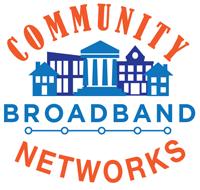Government Technology, April 1, 2013
Great politicians can explain complex issues quickly and simply. That’s what Franklin Delano Roosevelt did on Sept. 21, 1932, when, as a candidate for the presidency, he spoke in Portland, Ore., and addressed a big issue of the time: electrical service and who would provide it — public utilities or private companies.
“My answer has been, as it is tonight, to point out these plain principles,” Roosevelt told the crowd. “That where a community — a city or county or a district — is not satisfied with the service rendered or the rates charged by the private utility, it has the undeniable basic right, as one of its functions of government, one of its functions of home rule, to set up … its own governmentally owned and operated service.”
FDR went on to win the presidency and, while losing some battles, he helped bolster the viability of both public and cooperatively owned power companies, which are still serving their communities well today. He also encouraged states to regulate private electrical companies more aggressively.
We are at a similar transition point with fiber-optic networks, the slender glass tubes that transmit the torrents of bits and bytes that power the Internet, cable television and telephone service, as well as a range of other services, including smart energy grids.
It is now clear that fiber networks need to go everywhere; they should be carried into homes and businesses and replace the antiquated copper lines. But who will install these networks and who will control them? This question is key because it will impact decades of economic growth and who will benefit from it.
Hundreds of towns and cities are already laying their own fiber networks, and offering high-speed Internet, cable TV and telephone service at reasonable rates. They are doing this in the teeth of opposition from the private cable giants, such as Comcast, AT&T and Time Warner. These companies are using every means at their disposal, from the courts to the city council to the state legislature, to stop towns and cities.
…snip…
“Internet access, like electricity, is crucial to the economic and social health of the country,” wrote Susan Crawford in an op-ed in Bloomberg News. Crawford, a law professor and former special assistant to President Obama, is the author of “Captive Audience: The Telecom Industry and Monopoly Power in the New Gilded Age.”
Public fiber networks differ from private ones in that cities are interested in extending great Internet and other services as widely as possible, particularly for economic development reasons and not just maximizing profits and shareholder value.
“When a community owns it, the incentives produce totally different results,” says Christopher Mitchell, director of the Telecommunications as Commons Initiative of the Institute for Local Self-Reliance.
But private companies are fighting hard against such efforts, usually losing in court but sometimes winning in state legislatures after heavy lobbying and campaign contributions. In 2007, for example, the Louisiana Supreme Court ruled 7-0 against BellSouth and Cox Communications, the phone and cable television companies that had sued to stop a Lafayette power company from installing a fiber-optic network. But the North Carolina legislature passed a bill in 2011 that essentially prohibited localities, many of which already have public power, from offering Internet service. Eighteen other states reportedly have similar laws.
Given that the evidence shows that cities could offer better service at better prices than private companies, the logic behind these laws makes little sense. “They are the kind of arguments that can only work when accompanied by an army of lobbyists and large campaign contributions,” says Mitchell.
…snip…
This column by Alex Marshall, Senior Fellow, the Regional Plan Association in New York City was originally published in Governing magazine.
Read the full story here.




